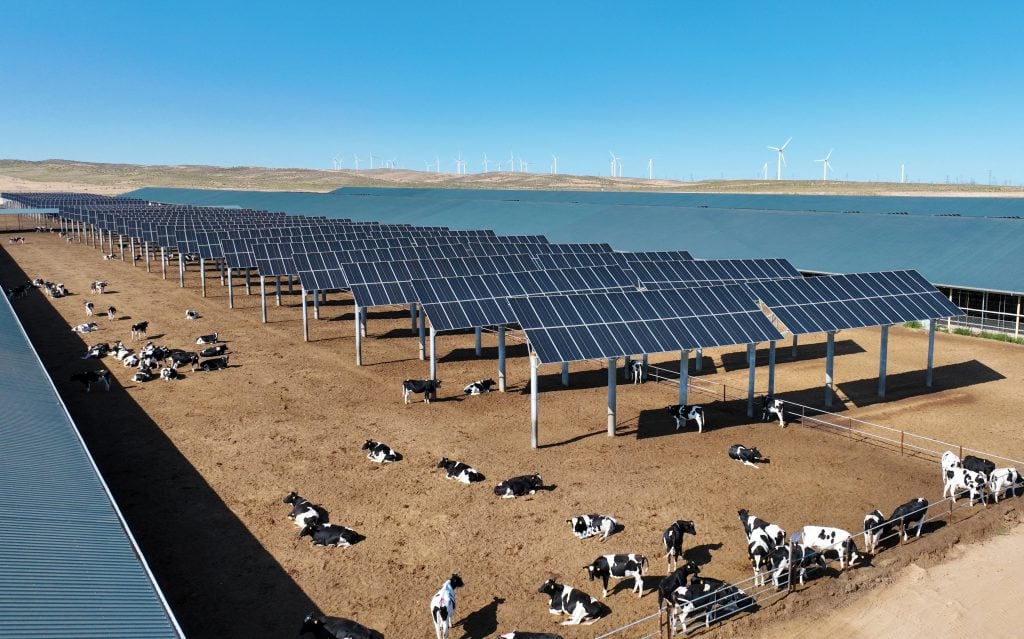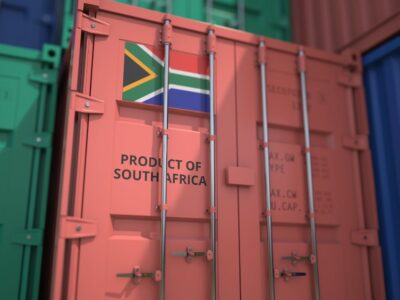
Less than 11% – just $500m – of the $4.61bn loaned by China to eight African countries in 2023 was dedicated to renewable energy projects despite the growing urgency of the global climate crisis, according to data from Boston University Global Development Policy Center. While China pledged $50bn to boost Africa’s economy at the Forum on China-Africa Cooperation (FOCAC) in September, only one of the 11 points in its action plan specifically mentions climate-related initiatives.
Moreover, the $50bn commitment breaks down into $29.5bn in credits, $11.3bn in assistance, and $9.8bn in investment, meaning that it largely falls to the private sector to determine how funds will be used. Chinese private investors and creditors are likely to prioritise lower-risk, higher-return ventures, which may not include climate-related projects. As a result, only a small portion of the funding is expected to address the continent’s environmental future, with most directed toward infrastructure and trade.
This absence of specific climate funding commitments has left some experts calling for clearer, long-term strategies. At the forum, Beijing emphasised endorsing smaller, sustainable projects that align with local development goals, referred to as “small and beautiful” projects. These initiatives, which focus on decentralised energy solutions, such as solar kiosks and electric vehicle charging stations, target specific, localised energy needs and are designed to meet the energy demands of rural and under-served communities, provide clean water, and power agricultural processing.
“China will implement 30 clean energy and green development projects in Africa,” Xi claimed.
Is small, however beautiful, sufficient?
But given Africa’s ambitious carbon neutrality goals and the rapidly growing energy demands of the continent, experts agree that China’s focus on “small and beautiful” initiatives may not be sufficient to meet the broader climate goals that the continent needs to meet.
Chen Fang, associate researcher at Huazhong Agricultural University in Wuhan, notes that “renewable energy projects, no matter their scale, generally require a high initial investment.” African nations already grappling with financial difficulties find this challenging to sustain.
Chinese investors, cautious of the rising regulatory scrutiny and financial risks, are hesitant to engage in overseas ventures, let alone small ones, making it harder for such initiatives to attract funding.
To make these initiatives viable, financial innovation and cooperative efforts between governments, banks, and enterprises are necessary, says Fang.
China’s ‘green leap forward’
As the world’s largest emitter of greenhouse gases, accounting for 30% of global greenhouse gas emissions in 2023, China’s actions on the climate front are critical to the ecological transition, particularly in terms of achieving the objectives of the Paris Agreement. “Without China successfully transitioning to a low-carbon economy, achieving global climate goals will be impossible,” according to the World Bank.
Xi Jinping’s pledge in September 2021 to achieve “peak carbon” by 2030 and carbon neutrality by 2060 has spurred domestic green investments in solar, wind, and electric vehicle technologies.
“China’s carbon neutrality goal has driven investment in renewable energy, energy efficiency, and zero-carbon technologies,” Fang says. “From a national point of view, all the challenges to be met on the climate and environmental front are such that there is a sense of social urgency in the country.”
In fact, China now dominates the global market for renewable energy equipment manufacturing, producing over 70% of the world’s solar modules, 69% of its lithium-ion batteries, and nearly 45% of its wind turbines in 2021.
The country leads the solar photovoltaic manufacturing sector, housing all of the world’s top ten photovoltaic equipment suppliers. Competition has driven down solar panel costs, putting China at the forefront of the green energy revolution.
The electric vehicle sector in China has seen rapid growth, too. In just two years, annual sales have risen from 1.3m to 6.8m, making China the world’s largest market in 2022 for the eighth year running.
Bonds abound
This rapid green transformation is backed by a burgeoning green bond market. In 2023 China issued over $80bn of green bonds, overtaking the US. By aligning its bond issuance with international standards, Beijing is positioning itself as a leader in climate finance, curbing “greenwashing” while supporting legitimate, sustainable investments.
“Green bonds play a key role in supporting China’s sustainable investment agenda, providing funds for projects to mitigate climate change and promote environmental sustainability,” Fang says.
“It is estimated that in order to achieve carbon neutrality in 2060, China will have to invest RMB70 trillion ($9.8tn) in related fields,” he adds.
This dynamic, Fang explains, “offers financial institutions the opportunity to rapidly grow their green financial businesses and reshape China’s investment approach in Africa, with a greater emphasis on low-carbon projects and renewable energy solutions”.
Sustainable commitment to Africa?
For Africa, China’s green finance model presents an opportunity. The continent’s renewable energy sector is chronically underfunded, with ambitious goals such as the African Union’s target to bring 300 GW of renewable energy online by 2030. Beijing’s willingness to share its green bond expertise with Africa could bridge this funding gap.
Beijing has invested in initiatives through its flagship Belt and Road Initiative (BRI), which aims to enhance global trade and infrastructure through massive investments. The BRI, originally announced by President Xi in 2013, is a transcontinental project connecting China with Southeast Asia, South Asia, Central Asia, Russia, and Europe.
“China’s infrastructure investments in Africa were initially focused on areas with a high carbon footprint, but with the emphasis on green development, the country has started to support renewable energy projects,” Fang says.
Since then, the initiative has started to shift its focus towards sustainable development and environmentally friendly investments. For example, Chinese company Jiangxi International funded the construction of the Garissa Solar Power Plant in Kenya, covering 85 hectares, costing over $100m and supplying 70,000 households
Rwanda is home to several landmark projects in clean energy development, including the Nyabarongo II Hydroelectric Power Station. Operated by Chinese company Sinohydro, the project will generate 43.5 MW of hydroelectric power – enough to power tens of thousands of homes – while also managing downstream flooding and storing irrigation water.
Furthermore, Kigali has set ambitious renewable energy goals, aiming for 100% clean electricity access by 2024, backed by China. It is also positioning itself as a regional hub for green transport, partnering with Chinese companies such as Tailing Electric Vehicle and Horwin to establish local assembly plants.
“With the right policies and safeguards in place, the BRI has significant potential to help countries work towards achieving the SDG and the 2030 Agenda,” according to the United Nations Environment Programme.
Challenges persist
However, challenges persist. “There are differences between China and Africa in terms of working styles, business practices, and language,” Fang notes. “By equipping African workers with the skills needed to operate and maintain renewable energy infrastructure, China could build local capacity for the continent’s green transformation.”
Rwanda is at the forefront of vocational training partnerships with China, especially with Beijing Forever Technology’s Technical and Vocational Education and Training Institute in Kigali, which offers training in areas such as low-carbon sectors, infrastructure construction and heavy machinery, contributing to bridging the skills gap essential to Rwanda’s green transformation.
Speaking at FOCAC last September, President Xi pledged to provide 60,000 training opportunities, particularly for African women and youth. However, Chen Fang nuances that “a sustainable cooperation between China and Africa needs to extend beyond just training and investment.”
“Investors and researchers should collaborate with both local and international institutions to work with reliable, detailed data at national and local levels, which is essential for effective energy planning and investment decisions in the region,” he concludes.











Comments